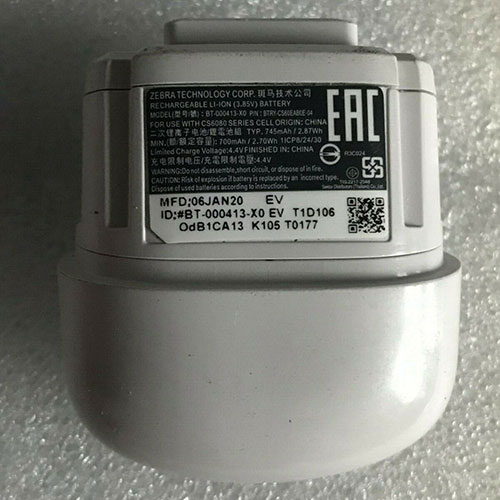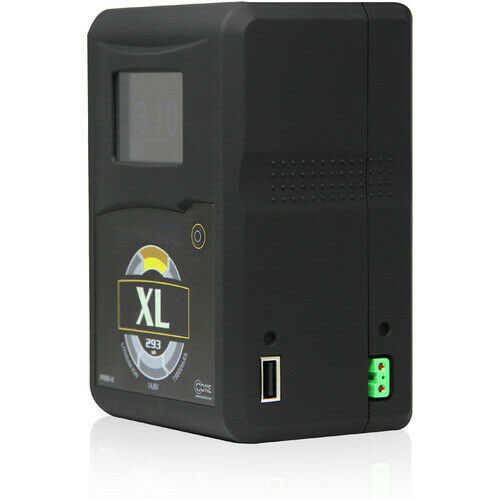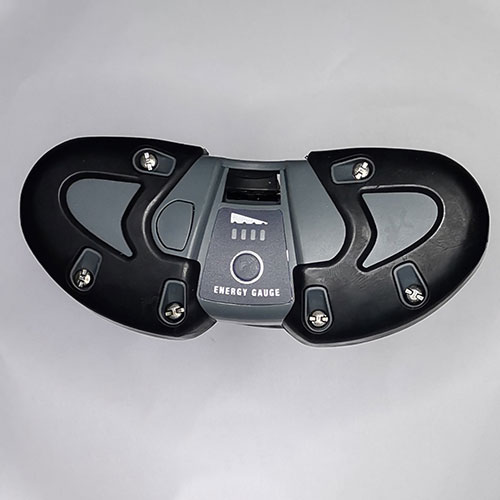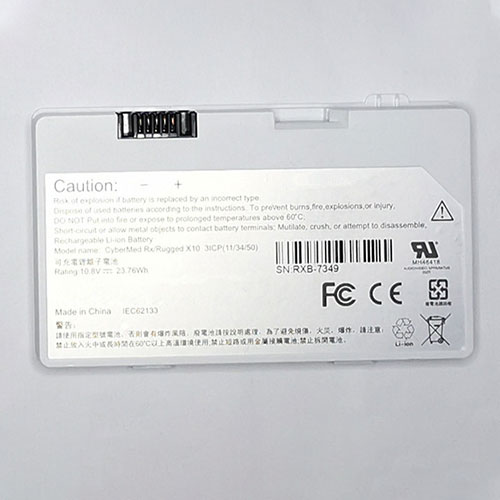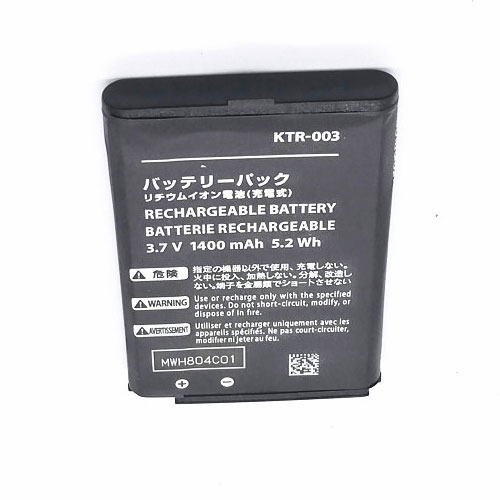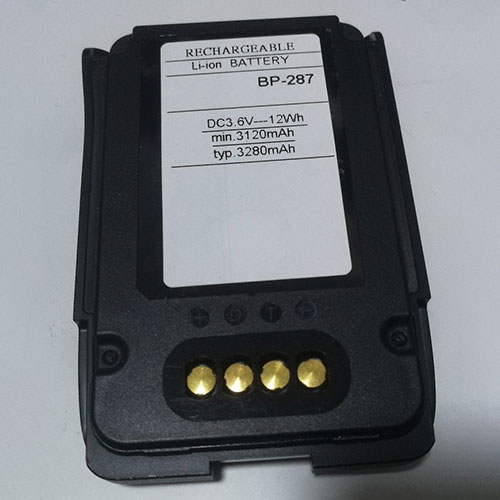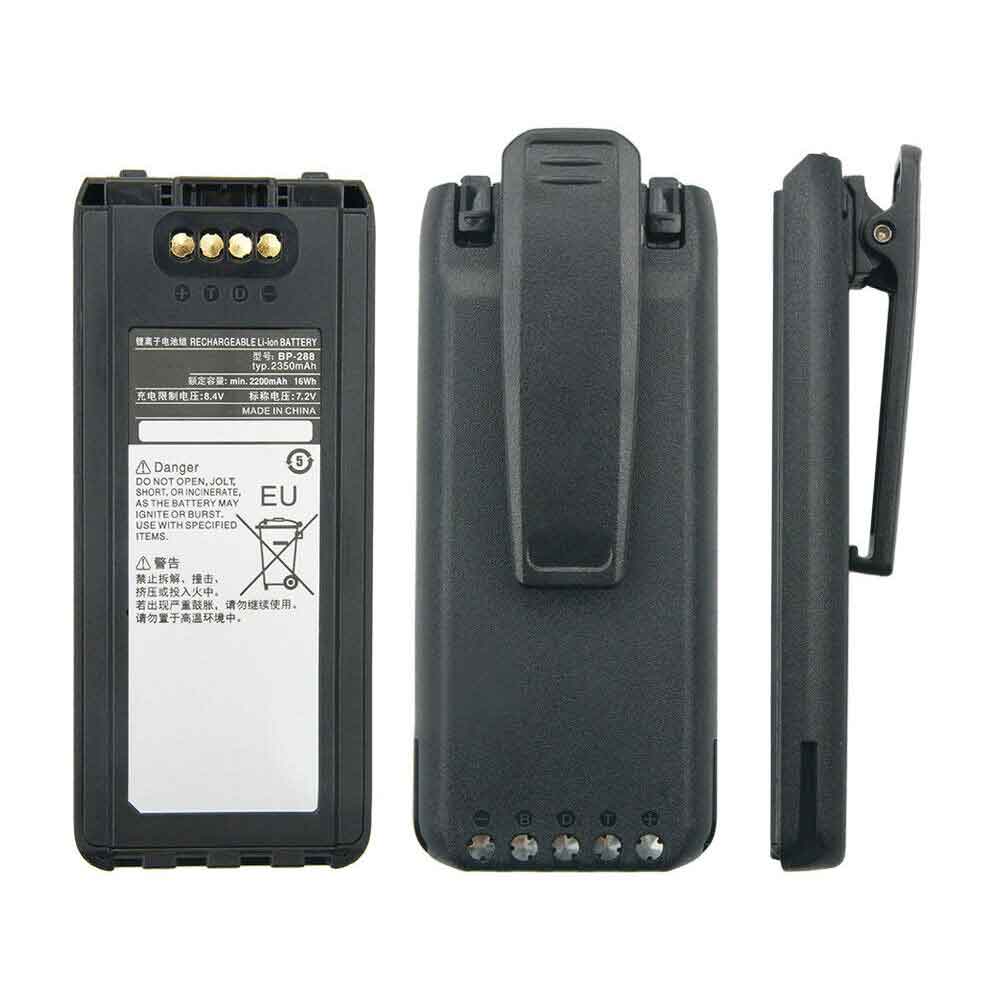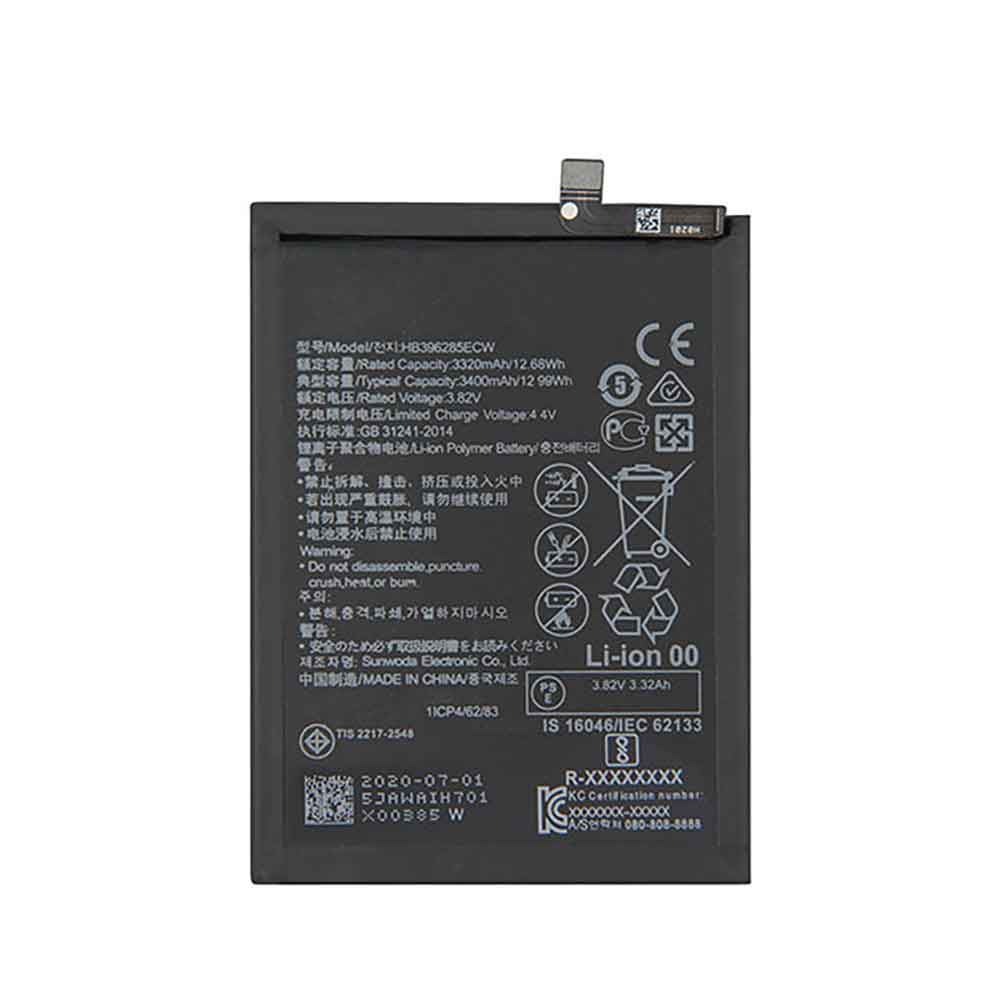In its midrange P Smart 2021 smartphone, Huawei uses a processor that comes from the manufacture of a Chinese partner for the first time. The Kirin 710A is considered the first SoC that Huawei developed itself. For quite a while, the Chinese manufacturer SMIC and the HiSilicon division have been working together in the commercializing of the 14-nm process in China.
Although the “original” Kirin-710 SoC is already manufactured in the modern 12-nm production process, it is manufactured by TSMC in Taiwan. Until now, the Kirin chips have been designed by the HiSilicon division at Huawei and then manufactured by TSMC. However, in order to break the dependency on the USA, the Chinese manufacturer is now willing (or was forced) to change to the slightly older 14-nm process. Our test will show whether this move can bring success.
Case – A Huawei smartphone with a punch hole
While the case, which is made from plastic, shows good workmanship, it does not offer a particularly high-quality appearance. Due to its pronounced thickness of more than 9 millimeters (~0.35 in), the P Smart 2021 also feels a bit chunky. Thanks to the relatively slim bezels – with the exception of the “chin” – and the punch-hole design, the display-to-surface ratio of the Huawei smartphone is almost 84.5%, which is not bad for this price class.
The keys show solid workmanship and offer a well-defined pressure point. The Huawei smartphone does not have any protection against water or dust.
Equipment – P Smart 2021 with a 3.5-mm audio port
The equipment of the Huawei smartphone includes an FM radio, dual SIM, a 3.5-mm audio port, as well as eMMC storage with a capacity of 128 GB. After taking the operating system into account, there are still about 109 GB of that available to the user. Those who need more storage capacity can expand the storage by up to 512 GB via microSD card, but this will not work as internal storage. The exFAT file system is supported, however.
The large 5000-mAh battery of the midrange smartphones can be recharged via the USB Type-C port, and this connection can also function as OTG host for peripheral devices.
Software – Huawei smartphone without GMS
The P Smart 2021 is delivered with Android 10 as the operating system, which is overlaid with the EMUI 10.1 surface. The security patches of our test unit were last updated on August 2020.
Because of the US ban that was imposed on the Chinese manufacturer, the Huawei P Smart 2021 has to make do without Google Services and the Play Store. In addition, you can only play DRM protected content on the 6.67-inch display in 480p or 540p resolution, since the DRM Widevine certification of the Huawei smartphone is at the L3 level.
Communication and GPS – The P Smart 2021 communicates at a snail’s pace
The Huawei smartphone accesses the mobile Internet at LTE speeds, and there is no 5G option. As usual for smartphones of this price class, the number of frequency bands supported by the P Smart 2021 is limited. While the midrange smartphone only offers a total of 10 LTE bands, no compromises are necessary for using it in this country (Germany). In addition, the P Smart 2021 supports Bluetooth version 5.1. On the other hand, the P Smart 2021 lacks an NFC chip for wireless communication with peripheral devices.
The WLAN module only communicates with the IEEE-802.11 a/b/g standards in the 2.4-GHz frequency range. Correspondingly, at 70 Mbit/s and 67 Mbit/s respectively, the transfer speeds between the Huawei smartphone and our Netgear Nighthawk AX12 reference router are at a very low level for a smartphone in this price class.
The location is determined via the GPS, Galileo, GLONASS, and BeiDou satellite systems. In order to evaluate the locating accuracy of our test unit in practice, we record a route in parallel with the Garmin Edge 500 for comparison. The deviations of the GPS module from the route are small and there is only a 180-meter (590 ft) difference in the route recorded by the Huawei smartphone and the navigation device at the end of the 12-kilometer (~7.5 miles) test route.
Telephone Functions and Voice Quality – Huawei smartphone without VoLTE?
The voice quality using the P Smart 2021 is good and inconspicuous. Voices are reproduced clearly. In addition to the dual-SIM function, the Huawei smartphone supports WiFi-Calling. However, we did not find an option for VoLTE in the Settings.
Cameras – Huawei smartphone with a quad-cam
The selfie camera has an 8-MP resolution and offers a quality that is reasonable for this price class and quite suited for multimedia content and snapshots. Colors appear realistic and blurriness remains within limits.
The main sensor of the quad-camera setup in the back has an f/1.8 aperture and 48-MP resolution. The photos show some problems with exposure and focus already in daylight. In worse light conditions, the image sharpness problems also worsen. This can be done better even in this price class.
In addition, the P Smart 2021 offers an 8-MP wide-angle lens and two 2-MP sensors that are responsible for computing depth information and macro recordings respectively. While the ultrawide-angle lens delivers usable results, they are at a low level. Often the recorded pictures have poor contrast, and details are lost in blurriness, image faults, and muddy pixels.
Image Comparison
Choose a scene and navigate within the first image. One click changes the position on touchscreens. One click on the zoomed-in image opens the original in a new window. The first image shows the scaled photograph of the test device.
Accessories and Warranty – P Smart 2021 without a case
The box of the smartphone includes a modular 22.5-Watt charger, USB cable, SIM tool, quick-start guide, and headphones.
Huawei offers a 24-month warranty on its smartphone.
Input Devices and Operation – Huawei smartphone with face unlock
In our test, the capacitive multi-touchscreen pleases with accurate operation. For unlocking, you can use either your fingers or biometric identification via face recognition. The fingerprint sensor of the P Smart 2021 is hidden in the power key. While neither unlocking mechanism is very fast, they are both reliable.
Display – P Smart 2021 with an IPS panel
The 6.67-inch IPS display, which has a punch hole in the top center, offers a 2400 x 1080 pixel resolution and a pixel density of about 400 ppi. Image and text content appear sufficiently sharp, even at close viewing distance.
At an average of 426 cd/m², the maximum brightness of the IPS display is slightly low, particularly compared to the Xiaomi competitors. In our more realistic APL50 measurement, which simulates an even distribution of light and dark areas on the LCD display, the maximum brightness is 438 cd/m².
Due to its background illumination, an IPS panel will never achieve the perfect black value of an OLED panel as in the Oppo A91. Correspondingly, you have to live with a lower contrast ratio in the P Smart 2021, which still is a solid 1.000:1 in the Huawei smartphone, though. The APL-50 measurement shows a minimally reduced contrast ratio, since the black value is then slightly increased (0.46 cd/m²).
We analyze the display using a photo spectrometer and the CalMAN software. The deviations from the sRGB color space are very low, and the color temperature of the display is also well calibrated.
When using the smartphone outdoors, because of its low brightness, you have to make sure to avoid direct sunlight. Otherwise you can hardly read the display contents. When looking at the display from the sides, the reduction in brightness is low, and the viewing angles remain stable for a long time.
Performance – Huawei smartphone with Kirin 710A
The HiSilicon Kirin 710A is an octa-core SoC that is based on the Kirin 710 but manufactured in the 14nm-FinFET process. Like the Kirin 960 and 970, the processor integrates four Cortex A73 (2 GHz) and four Cortex A53 cores in the big.LITTLE architecture that have a clock speed of up to 1.7 GHz. The integrated graphics card is a Mali-G51 MP4 with a weak performance.
In the CPU benchmarks, the Kirin SoC places significantly lower than the Snapdragon competitors. Even a Huawei P smart Pro with the Kirin 710 often places ahead of the P Smart 2021, particularly in the single-core arena. A similar picture presents itself in the graphics test of the GFXBench benchmarks, only with the performance differences to an Adreno 618 being even more pronounced.
Despite the low performance capabilities, subjectively the system performance feels acceptable. The P Smart 2021 often shows some smaller delays and scrolling in the browser looks choppy, but the Huawei smartphone does not present any major lapses.
You should note that the performance we described was achieved in the Performance mode. With the selection of Normal mode, our test unit becomes significantly slower at 1.7 GHz, showing some significant throttling after a short time (see Emissions section).
Games – Can you use the P Smart 2021 for gaming?
While you are able to play some graphically demanding games such as “PUBG Mobile” smoothly with the P Smart 2021, 30 fps are the limit. It is not possible to play the shooter game in the best graphics settings. Due to the lack of Google Services, besides apps, some games such as “Asphalt 9 Legends” or “Dead Trigger 2” are also not supported.
We also look at some less demanding games in more detail using the GameBench app. Here, the Mali-G51 MP4 is able to achieve a relatively even frame rate close to the native 60-Hz limit of the panel.
Emissions – P Smart 2021 with low heat
Temperature
The surface temperatures range at uncritical levels, and even under load, the surface never becomes uncomfortably hot. However, what is more interesting is the heat development inside the P Smart 2021.
In order to evaluate the heat development under constant load, we use the battery test of the GFXBench app. The Manhattan 3.1 test shows that with increasing load, the frame rate of the Kirin 710A only remains stable in Performance mode.
Speaker
In everyday operation, the mono speaker located at the bottom of the device produces a high maximum volume of 91 dB. As expected, the sound spectrum is dominated by sounds in the mid and high frequency range, and even lower mids are hardly reproduced.
While the 3.5-mm audio port permits a more bass-heavy sound reproduction, the noise level is somewhat pronounced at an SNR value of 75. Those who prefer a wireless connection via Bluetooth 5.1 should note that neither the LDAC nor the aptX or aptX HD codecs are supported.
Battery Life – Huawei smartphone with SuperCharge
Power Consumption
The battery of the P Smart 2021 offers a capacity of 5000 mAh. It can be completely recharged in about 90 minutes at up to 22.5 watts.
Battery Life
Under realistic conditions (display brightness set to 150 cd/m², Normal mode) in our WLAN test, the Huawei smartphone achieves a solid battery life. However, lasting more than 5 hours longer with the same-size 5000 mAh battery, the Redmi Note 9 Pro shows that much more is possible with a battery of this capacity.
Verdict on the P Smart 2021: Huawei not only limps behind in apps
Huawei’s midrange smartphone offers some solid basic virtues such as good workmanship and a decent IPS panel as well as a satisfactory battery life in combination with fast charging. But not more than that. Especially the performance of the new Kirin 710A is simply too weak for a smartphone that costs 230 Euros (~$275) recommended retail price.
Overall, the P Smart 2021 is hardly able to distinguish itself from the powerful competitors, and if it does, then only in a negative sense. Particularly with a Poco X3 NFC or Redmi Note 9 Pro, buyers will be offered significantly more smartphone capabilities at a similar price.
For the 190 Euros (~$227) that it currently costs, buyers shouldn’t really choose the P Smart 2021. The real competitors of the Huawei smartphone are the Redmi 9 or Galaxy A20s, which are available at about 140 Euros (~$168).
And even if we disregard this fact, due to the current lack of Google Services, it would be difficult to recommend the Huawei smartphone, even if it were able to surpass those of other manufacturers in terms of overall capabilities.
